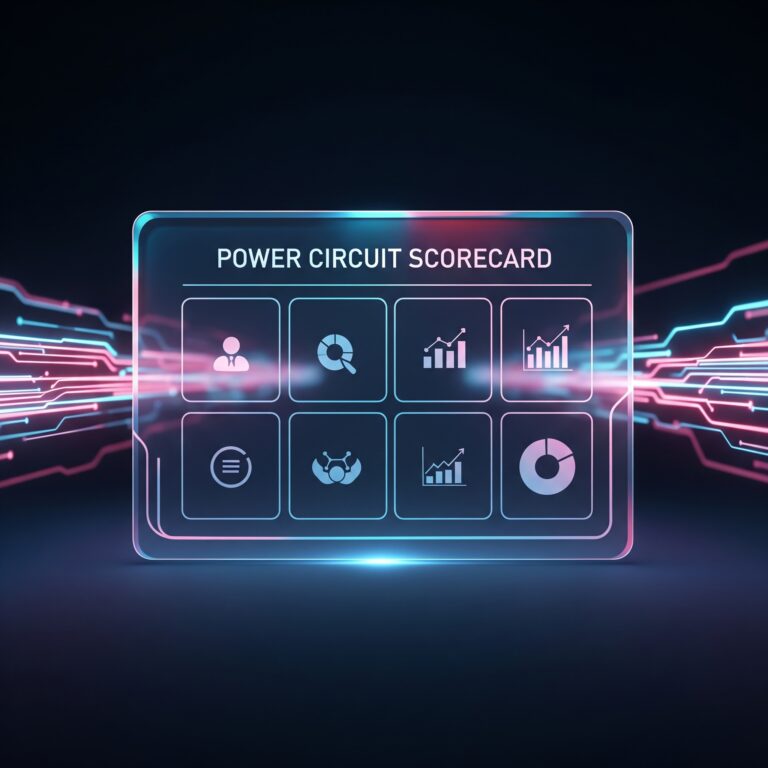What is CRM Software?

At the end of the day, businesses aren’t about products or services—they’re about customers.
Customers are the life force of a business—without solid customer relations, almost any company would struggle (or never even lift off)—and in today’s global markets, customer bases extend farther than a single neighborhood.
So, how can companies stay responsive and receptive to each of their customers? The answer lies in customer relationship management (CRM) software.
From turnover to automated surveys, our short guide will explain the ins and outs of CRM software for any customer-facing business.
What is CRM?
Before we answer “What is CRM software?” let’s first explore the meaning of the term CRM, or customer relation management.
CRM management is the collection, organization, and study of a business’s customer interaction. This covers a range of data across a company’s many departments, including:
- Marketing
- Customer service
- Accounting
- Performance analysis or consulting
- Sales
- Social media
Each department has crucial information on each of your customers that affects how you run your business—from advertising responses to click-through rates to final sales.
Synthesizing that data creates a holistic picture of how customers view your company, pointing to areas of success and struggle. The more you know about your customers, the more you can shape your business strategy to maintain and grow your customer base.
So, how does one connect the dots between this data? That’s where modern CRM software comes in.
CRM Systems 101
Sixty years ago, Rolodexes and paper spreadsheets were the height of CRM operations. Now, we have digital systems that help businesses and marketers utilize customer data more efficiently and productively.
What is a CRM system?
Modern customer relationship management software involves cloud-based platforms that combine customer relations data into one system. By doing so, a company can learn the needs, behaviors, and expectations of their customer base, which provides useful information when trying to improve the customer journey and overall business growth by these CRM features.
Today, CRM software systems pull from multiple channels across a company, not just a single address book or newsletter. These data points usually include:
- Customer accounts
- Customer location & demographics
- Customer interaction records (emails, phone calls, etc.)
- Social media engagement
- Website analytics (traffic, click-through rates, etc.)
- Marketing campaign responses
- Total sales
To translate all of this information into clear patterns, CRM software provides invaluable organization, processing, and projecting tools. Without these digital tools, your business may lack the analytical insight that could propel you toward success.
CRM Software Metrics
CRM systems combine data points and information across multiple departments, but what exactly does a CRM system measure?
When it comes to CRM data, certain metrics lead the way. Typically, you want to track evolving customer interest, actions, and costs over time. Let’s explore the most common and beneficial metrics to track within your CRM system:
#1 Customer Churn
The percentage of customers you lose over a period of time—typically a month, quarter, or year—is called customer churn (or turnover). Tracking total customers from the start to the end of a given period is crucial to establishing consumer interest in your business.
#2 Customer Effort Score and Net Promoter Score
The customer effort score measures how satisfied customers felt when purchasing from and interacting with a business and its employees. In the same vein, the net promoter score measures whether or not a customer would recommend the business to another person.
To gather this information, companies typically issue digital polls or forms immediately after interaction with a customer. However, you don’t need a final sale to ask customers for a review. CES polls can follow a number of interactions, including:
- Customer support
- Subscription signups
- Website visits
- Returns or exchanges
#3 Customer Retention Cost
Combining multiple data points, customer retention cost measures the price of keeping a customer. The lower your average customer retention cost, the better your profits.
To calculate this metric, companies compare customer payments with their individual costs to your company, including:
- Staffing costs
- Manufacturing costs
- Overhead costs (space, maintenance, technology, etc.)
- Marketing campaigns
- Customer loyalty programs or discounts
#4 Length of the Sales Cycle
The length of the sales cycle measures how long it takes for a customer to purchase your product or service, which begins from the first click to your website to the final sale confirmation.
Typically, the faster your sales cycle, the better. For a deeper analysis, CRM systems can also breakdown the length of each sales pipeline stage, from prospecting customers to closing the deal.1
#5 Close Rate
Tied to the sales cycle, the close rate measures lead generation eventually become closed deals (or successful purchases). Most companies self-define what a “lead” means—which can vary from how many customers saved items in a digital cart to how many follow your business on social media.
#6 First Contact Resolution Rate
In customer service, the last thing you want is a game of pass-the-telephone. The first contact resolution rate measures how often a customer complaint is resolved by the first contact. It’s usually a clear indicator of efficiency in customer service.
Common CRM Software Types
Clearly, CRM is not a simple subject. There are countless CRM data channels, procedures, and computations that go into the process. That’s why many CRM systems specialize in a particular function or subset of information. Businesses often combine the systems for a total view of their CRM progress.
From organizing contacts to projecting customer growth, here are the three main types of CRM systems:2
#1 Operational
When conducting a growing business, you must be cognizant of gaining potential customers. However, you must first ensure that your current customers are satisfied enough to stick around. Luckily, that’s the perfect job for an operational CRM system.
An operational CRM (such as Hubspot or Salesforce) smoothly automates and compiles customer data within or between departments. Leads, deals, and feedback from customers automatically upload to a digital platform, helping departments better track each customer down the sales pipeline.
Operational CRM systems could target all or one of the below tasks:
- Customer accounts – Knowing your audience provides you with essential knowledge as a marketer. An operational CRM system can track important customer information like contact addresses, demographics, purchase history, and individual lead generation.
- Marketing automation – Collecting answers from a MailChimp email campaign or wanting to send a notification to all customers who bought a specific item? Operational CRM systems automate large-scale marketing actions, gathering and utilizing customer data for stronger advertising strategies.
- Sales automation – If you want to shrink your sales cycle time or boost successful sales calls, then operational CRM can automate these processes for you. By categorizing and tracking leads and successful sales, these systems help your team target niche demographics and close more deals.
- Service automation – A successful deal isn’t the only CRM factor that counts. Your customers should feel happy and satisfied throughout all interactions with your company—that’s what creates brand loyalty. By automating customer support with chatbots or digital satisfaction surveys, operational CRM systems help your business maintain its customer satisfaction.
Overall, operational CRM software streamlines and improves the everyday work behind customer relations, benefitting businesses with linear sales processes or high automation needs.
#2 Analytical
If your business is unsure of which customer demographic to target or is seeking detailed reports on customer satisfaction, an analytical CRM system may be most appropriate for your business model.
Analytical CRM software (like Zoho Analytics or Creatio) collects, processes, and interprets all data on customer interactions. Compared to operational systems, the analytical CRMs focus more on customer trends and patterns, rather than streamlining daily tasks or interactions. It’s an excellent option for companies seeking:
- Detailed customer data
- Customer behavior patterns and trends
- New customer targets
- Revised marketing campaigns
- Sales forecasting
#3 Collaborative
As the name suggests, collaborative CRM software (such as Copper or Monday.com) bridges all customer data from marketing, sales, service, and other departments.
With a collaborative CRM, your service team can alert your marketing team to advertisement success, such as whether certain advertisements garnered higher levels of engagement or click-through rates.
Collaborative CRM systems can also alert your manufacturing or sourcing departments to faulty products or safety issues divulged through customer complaints, calls, or reviews.
While operational and analytical CRM systems often share info between teams, a collaborative CRM truly enhances interdepartmental communication by opening customer data to all departments to save time and improve interpersonal communication and customer satisfaction.
Why Your Business Needs CRM Software
CRM software isn’t just for international mega-conglomerates, it can help any business—small or large—reach its financial and long-term goals.
If you’re curious about how CRM software could improve your business, check out these researched benefits:
- Organization and efficacy – With almost three-quarters of users reporting improved access to company data, CRM software is a proven productivity booster.3 Studies show that CRM systems can enhance sales team productivity up to 34%, as well as total employee productivity by 15%.4
- Improved sales – Research found that CRM software data accessibility for sales teams helps shorten sales cycles anywhere from 8% to 14%.5 Additionally, it can help total sales numbers increase by up to 29%.6
- Higher profits – Nucleus Research found that for every dollar spent on CRM software, companies received $5.60 to $8.71 in return.7 On top of that, CRM systems can increase customers’ total spending by 20% to 40%.
- Happier customers – Across the board, about 47% of CRM users say the technology has significantly improved their customers’ satisfaction and retention rates.8
Strategize Your CRM Approach With PDM
Whether you’re working for a local ice cream shop or a multinational shipping company, CRM software is necessary for long-term success. With its digital tools, your business can grow and sustain its competitive advantage and unique customer base.
If you’re thinking about revamping your CRM strategy, Power Digital Marketing can help. Our email marketing and content marketing services create research-backed and personalized advertising solutions that allow you to engage and grow alongside your customers. We’re also here to provide CRM cleanup tips to ensure that your system is up to date and accurate.
Sources:
- Kitcast Blog. Building a Sales Pipeline for Your Business. https://blog.kitcast.tv/building-a-sales-pipeline-for-your-business/
- Tutorials Point. CRM – Types. https://www.tutorialspoint.com/customer_relationship_management/crm_types.htm
- Feldmar, R. Top 10 observations from CRM software users. https://www.resco.net/blog/crm-software-users-survey/
- Finances Online. 57 Key CRM Software Statistics: 2021/2022 Market Share Analysis & Data. https://financesonline.com/crm-statistics-analysis-of-trends-data-and-market-share/
- Nucleus Research. Data accessibility for sales teams shortens the sales cycle. https://nucleusresearch.com/research/single/data-accessibility-for-sales-teams-shortens-the-sales-cycle/
- Carter, R. The Ultimate List of CRM Statistics for 2021. https://findstack.com/crm-statistics/
- Nucleus Research. CRM Pays Back $8.71 For Every Dollar Spent. https://nucleusresearch.com/wp-content/uploads/2018/05/o128-CRM-pays-back-8.71-for-every-dollar-spent.pdf
- Capterra. CRM Software Buy Trends. https://www.capterra.com/customer-relationship-management-software/user-research-infographic
Our Editorial Standards
Reviewed for Accuracy
Every piece is fact-checked for precision.
Up-to-Date Research
We reflect the latest trends and insights.
Credible References
Backed by trusted industry sources.
Actionable & Insight-Driven
Strategic takeaways for real results.


















